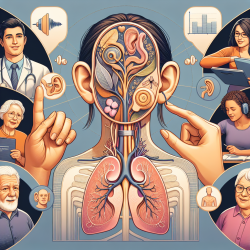Introduction
Obesity remains a significant public health challenge despite ongoing efforts to combat it through dietary and lifestyle changes. Two primary paradigms have emerged to explain the pathogenesis of obesity: the Energy Balance Model (EBM) and the Carbohydrate-Insulin Model (CIM). Understanding these models can provide valuable insights for practitioners aiming to enhance their skills in addressing obesity and encourage further research in this field.
The Energy Balance Model (EBM)
The EBM posits that obesity is primarily a result of an imbalance between energy intake and expenditure. It suggests that overeating, particularly of energy-dense, ultra-processed foods high in fats and sugars, leads to excess body fat. This model emphasizes the role of complex endocrine, metabolic, and nervous system signals in regulating food intake, often below conscious awareness.
Practitioners can apply the EBM by focusing on strategies to reduce energy intake and increase physical activity among patients. This approach aligns with traditional public health messages advocating for "eating less and moving more" as a means to achieve weight loss.
The Carbohydrate-Insulin Model (CIM)
In contrast, the CIM suggests that the hormonal responses to highly processed carbohydrates drive energy partitioning towards fat storage, resulting in increased adiposity and subsequent overeating to compensate for sequestered calories. This model highlights the impact of high-glycemic load diets on insulin and glucagon secretion, which influence fat mobilization and storage.
Practitioners can utilize the CIM by advising patients to reduce their intake of high-glycemic carbohydrates and focus on foods that promote a healthier hormonal balance. This approach may involve recommending diets lower in refined sugars and processed grains, which are common contributors to obesity.
Implications for Practice
Both models offer valuable insights into the mechanisms of obesity, and practitioners can benefit from understanding their differences and applications. While the EBM emphasizes calorie control and physical activity, the CIM focuses on the quality of carbohydrates and their hormonal effects. Integrating these perspectives can lead to more comprehensive and personalized obesity management strategies.
Encouraging further research in this area is crucial for refining these models and developing more effective interventions. Practitioners should stay informed about emerging evidence and consider how it may influence their practice.
Conclusion
The debate between the EBM and CIM underscores the complexity of obesity pathogenesis. Both models highlight the significant role of processed carbohydrates in driving obesity, albeit through different mechanisms. By exploring these paradigms, practitioners can enhance their understanding and approach to obesity treatment.
To read the original research paper, please follow this link: Competing paradigms of obesity pathogenesis: energy balance versus carbohydrate-insulin models.










